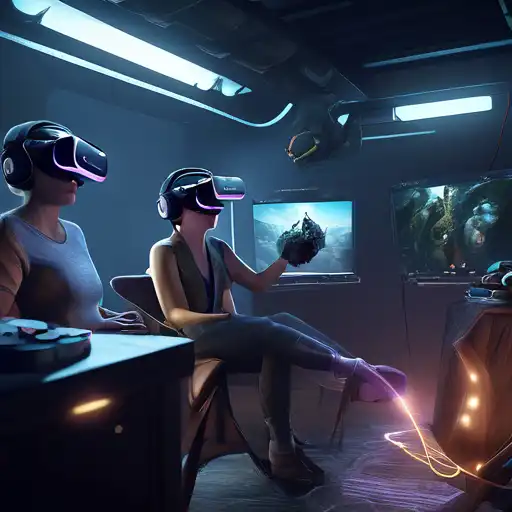Introduction to Virtual Reality
Virtual Reality (VR) has transformed the way we interact with digital content, offering unparalleled immersive experiences. From gaming to education, VR's applications are vast and varied. This guide will walk you through the essentials of creating captivating VR experiences that engage and astonish users.
Understanding VR Technology
Before diving into VR development, it's crucial to understand the technology behind it. VR relies on headsets and sensors to create a simulated environment, tricking the human brain into believing it's in a different world. The key to a successful VR experience lies in the seamless integration of hardware and software.
Designing for Immersion
Immersion is the cornerstone of VR. To achieve it, developers must focus on high-quality graphics, realistic sound effects, and intuitive user interfaces. Paying attention to detail can make the difference between a good VR experience and a great one.
Graphics and Visuals
High-resolution textures and dynamic lighting are essential for creating believable VR environments. Tools like Unity and Unreal Engine offer powerful platforms for developing stunning VR visuals.
Sound Design
3D audio plays a pivotal role in immersion. By simulating how sound travels in real life, developers can enhance the sense of presence within the VR world.
User Interaction in VR
Interactivity is what sets VR apart from other media. Implementing natural and intuitive controls is vital for user engagement. Whether it's through hand tracking or VR controllers, the goal is to make interactions feel as real as possible.
Optimizing Performance
VR applications demand high performance to prevent motion sickness and ensure a smooth experience. Optimizing your VR project involves balancing graphical fidelity with frame rate stability.
Testing and Feedback
User testing is invaluable in VR development. Gathering feedback and making iterative improvements can significantly enhance the final product. Remember, the best VR experiences are those that are constantly refined based on user input.
Future of VR
As technology advances, the possibilities for VR are endless. From social VR platforms to virtual tourism, the future holds exciting opportunities for developers and users alike.
Creating immersive VR experiences requires a blend of creativity, technical skill, and attention to detail. By following this guide, you're well on your way to mastering the art of VR development. For more insights into the world of virtual reality, check out our latest VR trends article.
